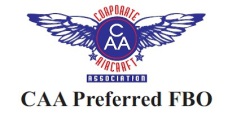THE GROUND TRAINING SYLLABUS
FAA REGULATIONS, THE APPROVED CESSNA FLIGHT AND MAINTENANCE MANUALS FOR
THE PARTICULAR AIRCRAFT WILL BE USED AS THE REFERENCES FOR THIS TRAINING
Session 1. Flight Rules, Regulations, Limitations, and Available Services.
FARS: Part 43 Maintenance, Preventive Maintenance, Rebuilding and Alterations.
Description of and Qualification of individuals Performing
Part 61 Airmen Certification, Pilots Flight Instructors and Ground Instructors.
61.133 Commercial Privileges and Limitations
61.193 Flight Instructor Privileges. 61.195 Limitations and Qualifications
61.57 Recent Flight Experience Pilot in Command
Part 91 Air Traffic and General Operating Rules.
91.3 Responsibility and Authority of Pilot In Command
91.7 Civil Aircraft Airworthiness, 91.103 Preflight Action
91.119 Minimum Safe Altitudes, 91.126 Operating at Uncontrolled Airports
91.171 VOR Equipment Check for IFR, 91.175 IFR Take Off and Landings
AIM: Basic Flight Information and ATC Procedures.
FSS services: AIM 4-1-3
VFR and IFR Procedures and Publications
Session 2. Aircraft Systems, Equipment, and Avionics For the Aircraft to be Used (Normal and Abnormal Operations)
Engine Systems: Electrical - Two 100 AMP Alternators, Fuel - Continuous Flow Injection, Hydraulic - One Pump each Engine for Landing Gear Operation, Ignition - Dual Magnetos each Engine, Induction / Exhaust - Turbocharger Hot and Cold and Waste Gate.
Propeller Systems: Propeller is Hydraulic Operated Governor Controlled using Engine Oil , Prop Sync - Electric Sensing and Control, Prop Deice - Uses 28VDC Heating Elements.
Fuel System: Operation, (normal and abnormal) Service, Quantity and Indication Primer sys.
Flight Control Systems: Aileron, Rudder, Elevator, Flap and Trim.
Landing Gear: Retraction/Extension (normal and abnormal), and Brakes.
Fuselage Systems: Environmental - Heating, Air Conditioning, Pressurization and Controls.
Session 3. Flight Planning, performance, and Limitations.
Certificates and Documents: Pilot Certificate, Medical Certificate, Registration certificate, Airworthiness Certificate, Approved Flight Manual, W&B/Equipment List, FAA Form 337?
Airworthiness Requirements: Maintenance Inspections, Pitot Stat, Transponder, VOR.
Weather Information - METAR, TAF, FA, How to Obtain, AWOS, ASOS, AND ATIS
Flight Planning Procedures - PreFlight?
National Aerospace System - Class A, B, C, D, E, G
Aircraft Performance and Limitations - Performance Charts
Aircraft Weight and Balance - Were to Find and How to Compute
Enroute Flight Procedures - How to Update Wx, How to Divert
Aeromedical Factors - Hypoxia,
THE FLIGHT TRAINING SYLLABUS
THE FLIGHT REVIEW BLOCK ONE (APPROXIMATELY TWO HOURS):
PERFORM NORMAL AND EMERGENCY PROCEDURES IN ACCORDANCE WITH THE FAA APPROVED FLIGHT MANUAL FOR THE AIRCRAFT BEING USED. THE APPROVED CESSNA AIRCRAFT FLIGHT MANUAL WILL BE USED FOR OPERATIONAL PROCEDURES AND MANEUVERS. THE GRADING CRITERION TO BE USED WILL BE THE FAA PRACTICAL TEST STANDARDS DOCUMENT S-8081-12B .
NOTE
INFLIGHT MANEUVERS AND AIRCRAFT OPERATIONS WILL BE CONDUCTED IN THE APPLICANT SUPPLIED AIRCRAFT AND WILL CONFORM WITH THE FAA APPROVED CESSNA 400 SERIES AIRCRAFT FLIGHT MANUAL AND THE FAA PRACTICAL TEST STANDARDS FOR THE PILOT RATING HELD. PILOT OPERATIONS THAT DO NOT MEET THE APPROVED GRADING CRITERION WILL REQUIRE ADDITIONAL TRAINING UNTIL THE STANDARDS CAN BE MET.
PREFLIGHT PROCEDURES
Preflight Inspection
Cockpit Management
Engine Starting
Taxiing
Before Takeoff Check
Traffic Patterns
Airport Markings and Lighting
TAKEOFFS, LANDINGS, AND GO-AROUNDS
Normal and Crosswind Takeoff and Climb
Normal and Crosswind Approach and Landing
Short-Field Approach and Landing
Go-Around/Rejected Landing
SLOW FLIGHT, STALLS, AND EMERGENCY OPERATIONS
Engine Failure During Takeoff Before VMC
Engine Failure After Lift-Off (Simulated)
Maneuvering During Slow Flight
Power-Off Stalls
Power-On Stalls
Spin Awareness
Maneuvering with One Engine Inoperative
VMC Demonstration
Approach and Landing with an Inoperative Engine (Simulated)
Systems and Equipment Malfunctions
THE INSTRUMENT FLIGHT REVIEW
BLOCK TWO (APPROXIMATELY TWO HOURS)
PERFORM INSTRUMENT MANEUVERS AND PROCEDURES DESCRIBED IN
THE FAA PRACTICAL TEST STANDARDS DOCUMENT S-8081-4C AND THE APPROVED FLIGHT MANUAL FOR THE AIRCRAFT USED.
Instrument Cockpit Check
Instrument Takeoff and Climb
Intercepting and Tracking
Navigational Systems and DME arcs
Recovery from Unusual Flight Attitudes
Holding Procedures
Perform Nonprecision Instrument Approach
Perform Precision Instrument Approach
Perform Missed Approach
Circling approach
Landing from a straight in or circling approach
One Engine Inoperative (straight-and-level flight and turns)
One Engine Inoperative---Instrument Approach
Approach with loss of primary flight instrument indicators
Checking instruments and equipment

 Winds are East at 3.5 MPH (3 KT). The pressure is 30.09 and the humidity is 92%. Last Updated on Jul 27 2024, 5:35 am EDT.
Winds are East at 3.5 MPH (3 KT). The pressure is 30.09 and the humidity is 92%. Last Updated on Jul 27 2024, 5:35 am EDT.

